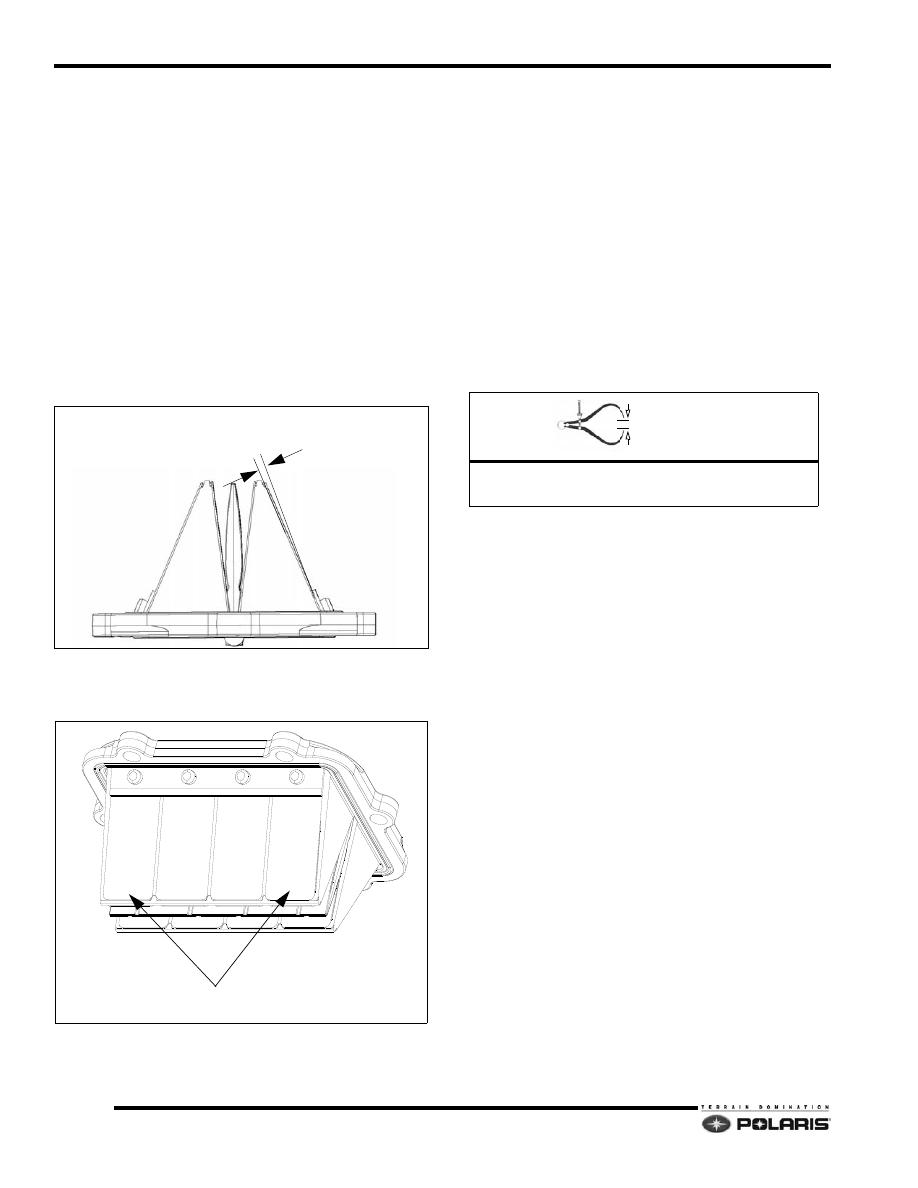Snowmobile Polaris 600 RUSH (2010 year). Instruction - part 15

3.10
Engine/Cooling/Exhaust
9923311 - 2010-2012 PRO-RIDE RUSH/Switchback/RMK Service Manual
© 2011 Polaris Sales Inc.
Reed Valve Inspection
1.
Loosen the hose clamps.
2.
Remove the throttle body from the intake boots.
3.
Remove the intake boot fasteners.
4.
Remove the intake assembly.
5.
Separate the intake boot from the reed cages.
6.
Separate the reed stuffer(s) from the reed cage and
inspect the reeds before they are removed from the
reed cage.
NOTE: Measure the air gap between the fiber reed and the
reed block. The air gap should not exceed .015" (.38mm). If
clearance is excessive DO NOT attempt to reverse the reeds
to reduce the air gap. Always replace them if damaged or
worn. Check each fiber reed for white stress marks or
missing material.
7.
Inspect the leading edges of each reed pedal. If edges
are chipped, or excessively worn, replace the reed
assembly.
Bearing Fit
Any time crankshaft bearing failure occurs and the case is
reused, check the bearing fit into the case halves using the
following procedure.
With case halves cleaned, reinstall the main bearings with
a piece of Plastigage between the bearing race and
crankcase.
Install and torque the crankcase fasteners to
specification. Take the crankcase apart, and then
measure the Plastigage. Compare Plastigage width to
interference fit specification.
The air gap should not exceed.015” (0.30mm)
INSPECT EACH PEDAL EDGE FOR DAMAGE
= In. / mm.
.061mm)
Bearing Interference Fit:
.0014" - .0024" (0.035-0.061mm)